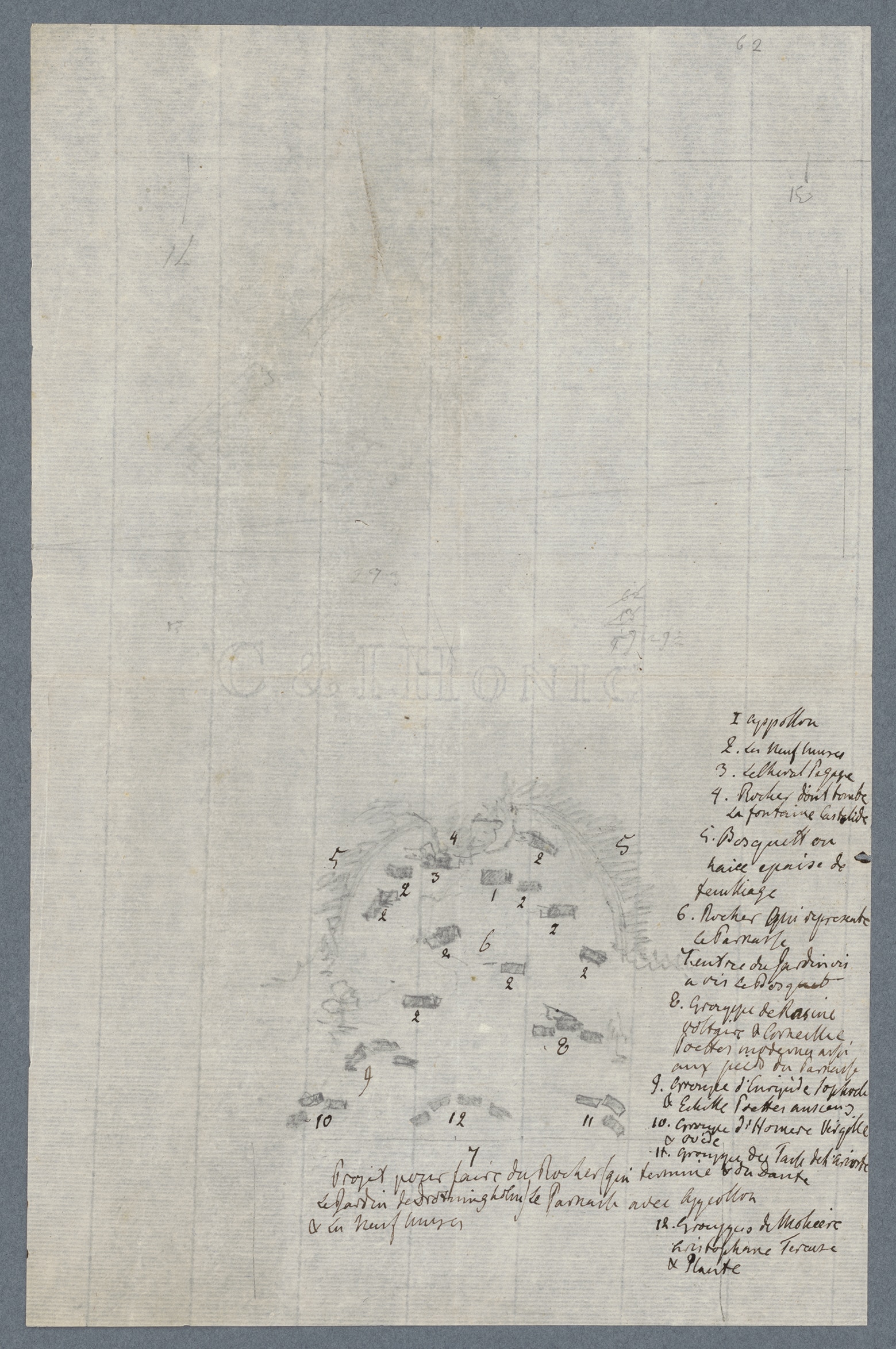Ludwig Wittgenstein (and Gustav III of Sweden), Designing Gardens
In the following extract, from his book Cambridge College Gardens, Tim Richardson describes the incident that made philosopher Ludwig Wittgenstein sketch out his ideas for an alternative garden design at Trinity College in Cambridge, alongside a letter Wittgenstein wrote to the College Garden Committee objecting to the plans for their Fellows’ garden.

The grass in the fellows’ garden is left to grow long in some areas, with narrow paths mown through, an experiment first conducted in 1933. This led the philosopher Ludwig Wittgenstein, one of Trinity’s most celebrated importations, to pen a detailed response to the college garden committee. He disliked the way tulips and fritillaries had been mixed in the grass and felt that ‘tulips of all contradicting colours filling up big stretches of the rough grass look gaudy and vulgar.’ Wittgenstein—who had worked as a gardener in Austria—provided an annotated plan of the area (see drawing) in which he suggested repositioning the paths and adjusting the garden aesthetics: ‘The kidney shaped bed with the dahlias in it looks very bad because of the border of Veronica round the dahlias. This fringe makes it look like a gaudy birthday cake.’ Wittgenstein followed this up with a four-page letter to Prof. Burnaby, chair of the garden committee:
‘I had a talk with our gardener about this bed
a few weeks ago…I can’t help thinking that it
would be right to repeat beds again and again
with improvements, instead of either repeating
them without improvements or changing the
whole plan next year (unless it’s absolutely
necessary)…Please forgive me these remarks, but
I thought I ought to get them off my chest.’
Yours sincerely,
Ludwig Wittgenstein
Tim Richardson is a writer who specializes in garden and landscape design and history. He has been gardens editor at Country Life, and landscape editor at Wallpaper* magazine, and was the founding editor of both the award-winning gardens magazine New Eden and Country Life Gardens. He has authored several books—Cambridge College Gardens, Oxford College Gardens, Sissinghurst: The Dream Garden, to name a few.
Wittgenstein’s sketch has been reproduced with the kind permission of the Masters and Fellows of Trinity College Cambridge. To read (or view) Wittgenstein’s letter in full click here and a blogpost by Trinity College Library, Cambridge on this letter here.
Another Amateur Garderner—King Gustav III of Sweden’s sketch for Project of Parnassus, Drottningholm, 1784, on ‘normal letter paper'[1]—recently on display in the exhibition Trädgården (The Garden) at the National Museum, Stockholm. To learn more about the project that sits within the Rosenstein-Tersmedenska Collection at Riksarkivet, Stockholm, click here.

Note
- ‘Art and architecture greatly influenced Gustav III on his trip to Italy in 1783-84. The King’s ideas included creating a parnassus on the mound at the rear end of Drottningholm’s pleasure garden. This was because Gustav had acquired the Nine Muses and Apollo from the artist Giovanni Volpato in Rome on 13 March 1784. The King’s first thought was to arrange them in a picturesque garden setting. He quickly sketched his idea on normal letter paper.’ Exhibition note from Trädgården, 23 February 2023 to 7 January 2024, National Museum, Stockholm.
